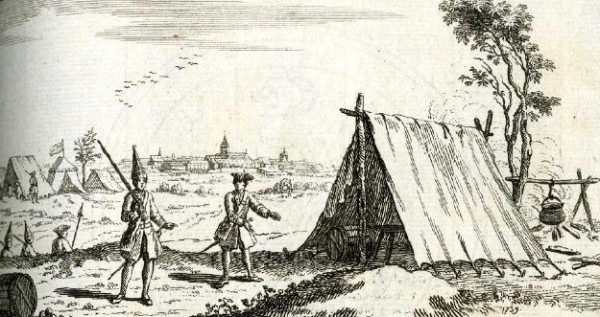
Gaming miniatures scenarios in the wilderness of 18th-century America and the French and Indian War period necessitates terrain that speaks of the period’s stories, often played out far away from towns and homesteads. With campaign seasons hacked through the woods of the Northeast, Ohio Country and Great Lakes region, impermanent campsites are often the more regular terrain encountered during play.
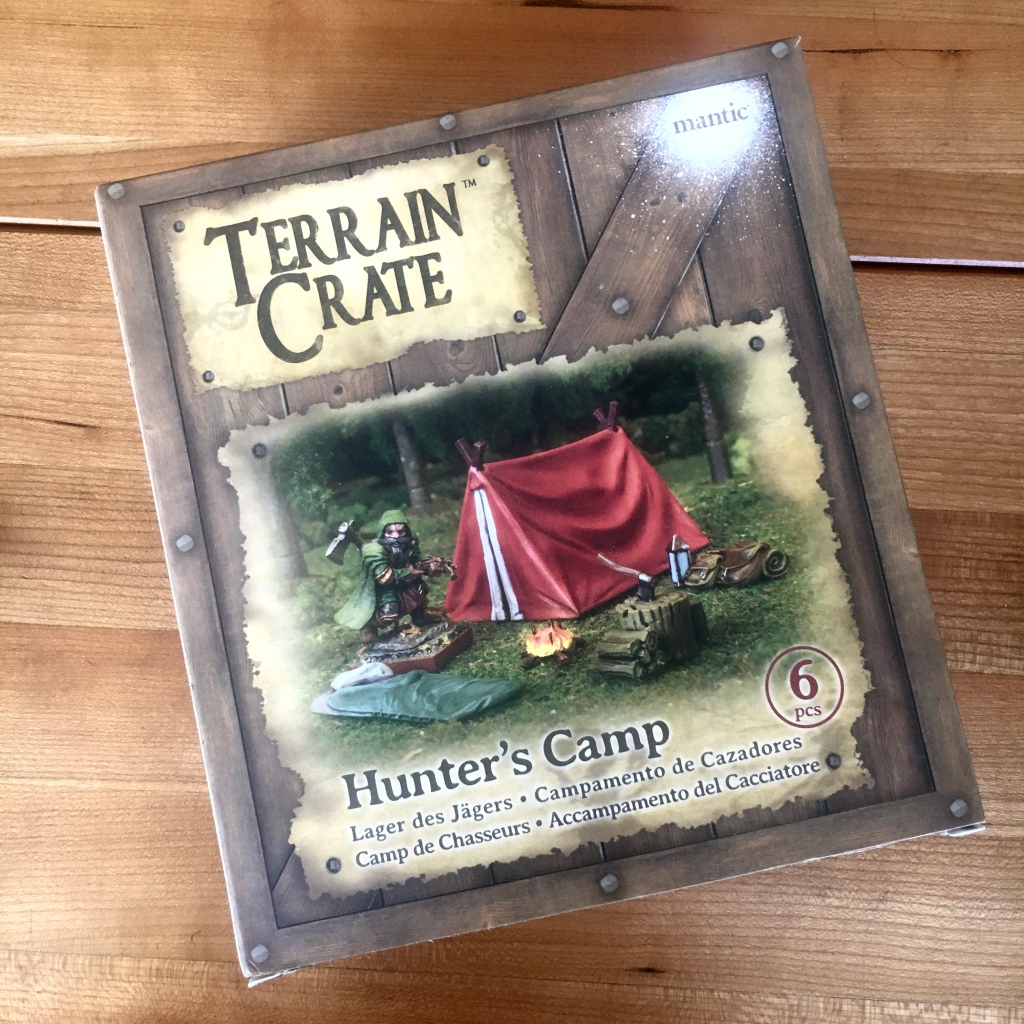
I’ve found a couple manufacturer’s that provide some great, inexpensive plastic terrain to create campsite vignettes on the table. The Terrain Crate Hunter’s Camp from Mantic Games, while produced for fantasy role-playing gaming, is a great out-of-the box foundation for any wilderness camp. The inexpensive box comes with a tent, campfire, bedroll, stack of gear and firewood pile. My one knock on the set is the rubbery plastic that takes flat paint and creates a bit of a gloss.
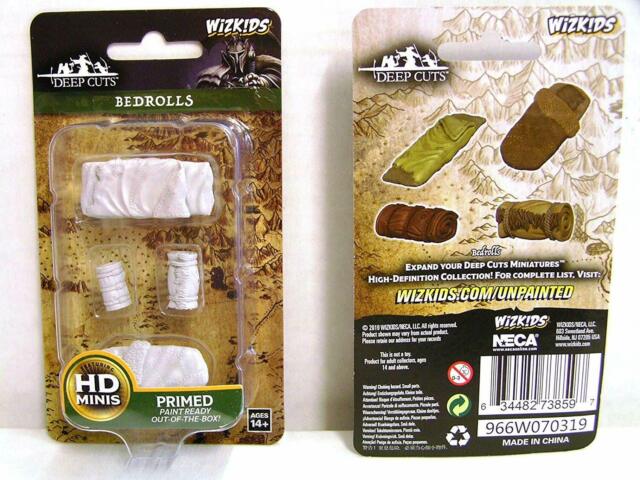
To supplement this set, I have a couple more bedrolls from the blisterpack from WizKids. These casts are primed and take paint exceedignly well right out of the box. The company has been adding all sorts of terrain, bits and pieces to their line of figures over the past few years including cannons, barrels, boxes, furniture, etc., all of which can find a home in a historical setting.
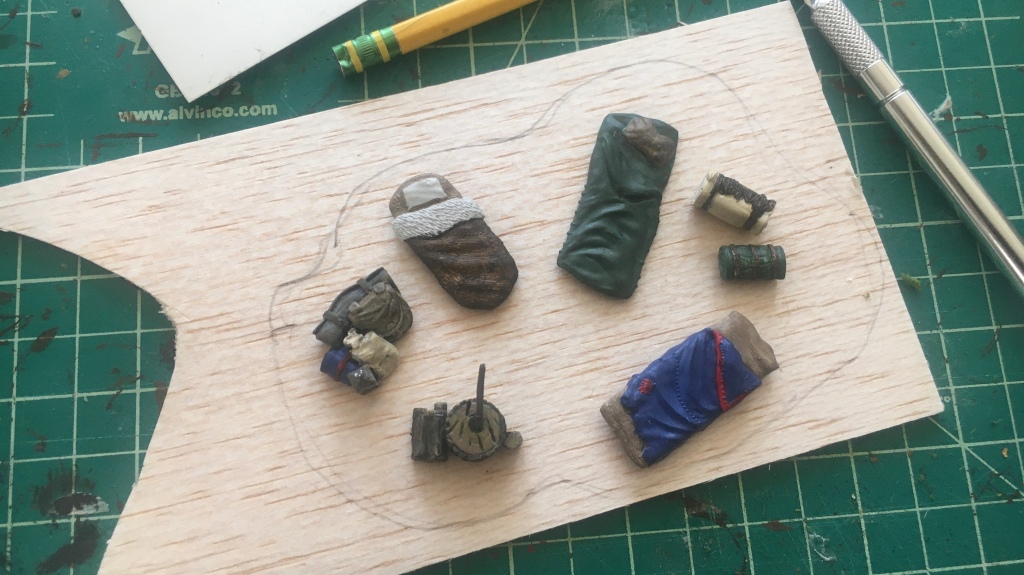
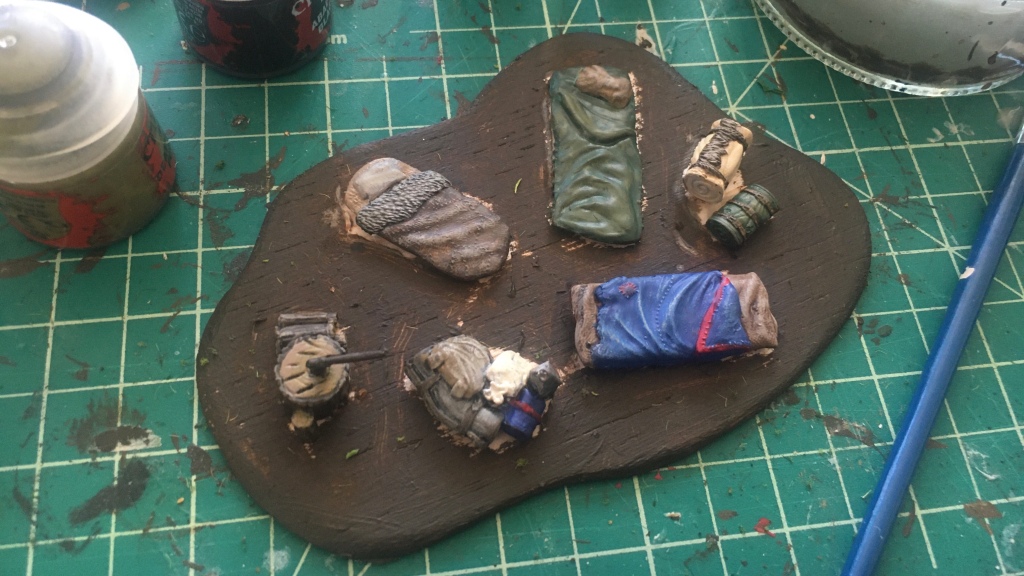
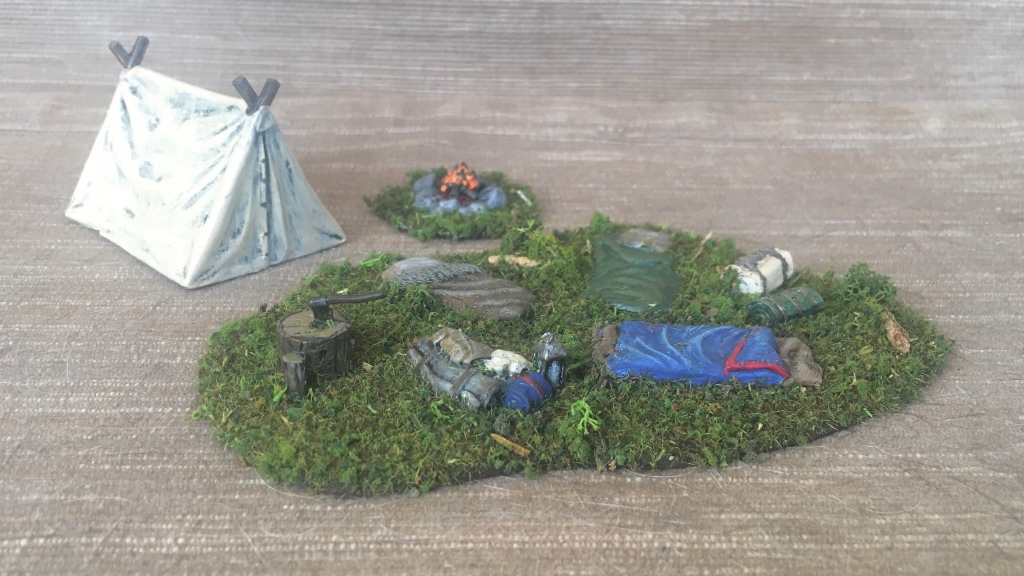
I painted and glued up all the smaller WizKids and Mantic pieces onto a freeform cut balsa base which I flocked. I kept the tent and campire (mounted on a large metal washer) separate from tha larger campsite scene for ease of tarnsport and a bit more flexibility of use on the table.
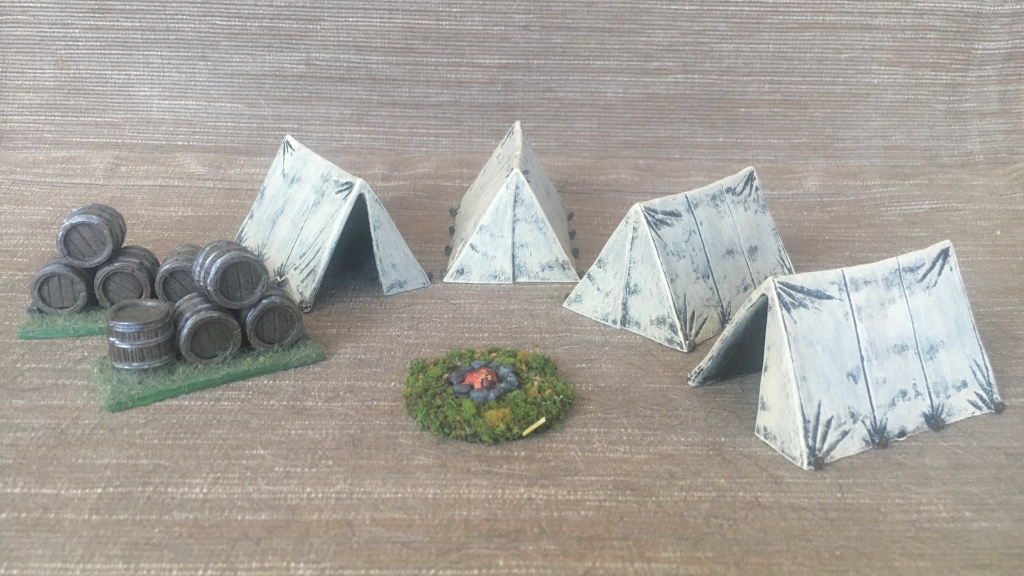
I also have a number of ridge tents, a campfire and barrels from Renedra Ltd. Like the other manufacturers above, this UK-based company manufacturers a variety of plastic terrain including buildings, fences and gabions apprpriate to the 18th-century. The barrels glue up from two halves and I mounted them up in various piles on smll strips of balsa.
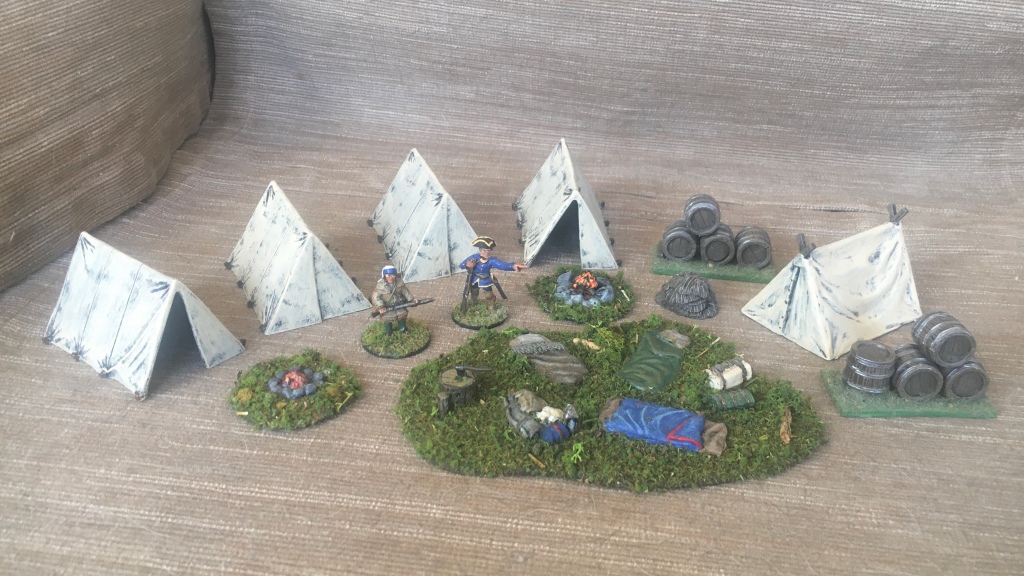
Along the way, I’ve also picked up a resin cast of a pile of beaver pelts, a key item for traders making their way through the North American back woods of the 1700s. All together, these elements from three manufacturers combine to give me a pretty good sized campsite for trappers adventuring in the wilderness or a European army on campaign.






